Intimate Coercion
Intimate Coercion
Recognition and Recovery
Marti Loring and Melissa Scardaville
Rowman & Littlefield
Lanham Boulder New York London
Published by Rowman & Littlefield
A wholly owned subsidiary of The Rowman & Littlefield Publishing Group, Inc.
4501 Forbes Boulevard, Suite 200, Lanham, Maryland 20706
www.rowman.com
Unit A, Whitacre Mews, 26-34 Stannary Street, London SE11 4AB
Copyright 2015 by Rowman & Littlefield
All rights reserved . No part of this book may be reproduced in any form or by any electronic or mechanical means, including information storage and retrieval systems, without written permission from the publisher, except by a reviewer who may quote passages in a review.
British Library Cataloguing in Publication Information Available
Library of Congress Cataloging-in-Publication Data
Loring, Marti Tamm, author.
Intimate coercion : recognition and recovery / Marti Loring and Melissa Scardaville.
p. ; cm.
Includes bibliographical references and index.
ISBN 978-1-4422-5432-9 (cloth : alk. paper) ISBN 978-1-4422-5433-6 (electronic)
I. Scardaville, Melissa, author. II. Title.
[DNLM: 1. Coercion. 2. Family Relations. 3. Domestic Violence. 4. Family Therapymethods. HQ 515]
RC569.5.F3
616.85'8220651dc23
2015014100
 The paper used in this publication meets the minimum requirements of American National Standard for Information SciencesPermanence of Paper for Printed Library Materials, ANSI/NISO Z39.48-1992.
The paper used in this publication meets the minimum requirements of American National Standard for Information SciencesPermanence of Paper for Printed Library Materials, ANSI/NISO Z39.48-1992.
Printed in the United States of America
To all who have beenor are now coercedmay the light of knowledge and understanding unlock the cages of captivity.
Foreword
By David Grand, PhD, developer of Brainspotting, and Cynthia Schwartzberg, LCSW, integrative therapist and certified Brainspotting consultant
B y carefully studying womens lives and their struggles, Judith Jordan, director of the Jean Baker Miller Training Institute at the Wellesley Center for Women, along with Marti Loring, director of the Center for Mental Health and Human Development, the Emotional Abuse Institute, have created new models of human development. These models focus on connection and the barriers/disruptions that can occur in connection, including violence and lack of empathy. Hopefully these models will help transform the destructive social impact of coercion as well as other societal ills such as racism, sexism, and classism. The practice of mutual empathy, which they promote, supports social justice and the belief that growth-fostering connections are central to human development.
Melissa Scardaville, presently working as a sociologist in health care, brings detailed research and literature to this book. She hopes that shedding more light on coercion will add understanding to the choices people make.
Marti Loring has worked with emotionally, physically, and sexually abused individuals for over thirty years. From this background she captures the lives of those who are ensnared by coercion. Her narrative illuminates, for both professionals and family/friends of such victims, an understanding of their profound challenges.
Loring and Scardaville hope this book will reach helpers of all kinds who could recognize coercion and emotional abuse, offering help and comfort to the trapped coerced persons, sometimes unable to see clearly what is happening in their lives.
Different from most books on an issue, this book not only gives examples but provides solutions and tools for therapists and others who intervene to help. The case studies bring home to the reader many actual experiences and dilemmas experienced during coercion.
The human stories in this book reflect the loss of self and the challenge to act against ones will. Those who are coerced are regularly threatened with harm to themselves, their children, and even pets. They have been shut out and isolated with almost nothing left but their intimate relationship and, as the authors have pointed out, leaving the relationship requires a functioning sense of self which coercion has taken away.
In many homes, the force of coercion is ripping apart the fabric of the family. Innocent victims are hurt, even killed, by plots hatched by those who are coercive. Intimate partner violence, coercion, sexual violence, and stalking are important and widespread public health problems in the United States. As this book suggests, violence deeply changes people: It alters the structure of lives, self-identity, self-esteem, and the ability to think and function with clarity and focus.
Women are by nature connectors. It is primarily within relationships that women grow and deepen their connection to self and others, and fostering connection is important to men and women from diverse backgrounds, so that the rupture of connection during coercion is both powerful and terrifying to the coerced individual, who fears during coercive threats for the safety of those dearest and most intimate.
As pointed out in this book, in a coercive relationship, the coerced person becomes increasingly isolated, more distant and disconnected from the other and themselves. Slowly a traumatic bond is developed and fear leads to greater fear, yet regret of loss, as well.
The healing process explained in this book can be as complex as the scars from coercion, and even more damaging than the physical injuries. The effects after the relationship has ended can be pervasive and long-lasting, and this is described by Loring and Scardaville.
People subjected to coercion are programmed into compliance and addressing the phenomena in therapy and other interventions is challenging. The therapist must be attuned to the subtle forms of emotional abuse and coercion experienced by those who are coerced. Loring outlines the eight essential components of the connective relational intervention model in working with the coerced, starting with the therapeutic stance marked by empathy and support, helping the fragmented self begin to integrate in connection with others.
Therapists are trained to diagnose in order to understand the clients experience and form a treatment strategy. However, for many coerced individuals, therapists can see struggles to keep alive... as manipulation, and can view profound anguish and sadness as depression, without understanding the forces causing these and other symptoms. It is essential for the therapist to validate the individual, develop a sense of trust, and perceive them beyond their individual behavior. Connection and caring, of the therapist and other community groups/causes, are crucial as the therapist supports the clients capacity for healing.
Loring and Scardaville have described various methods of therapy used in dealing with trauma, since coerced individuals are often profoundly traumatized. One of these methods that may be used prior to, or in conjunction with Lorings model for healing, is Brainspotting, an integrative model. It is a Dual Attunement model where the relational attunement is focused and framed by neurophysiological and somatic awareness to bring the client into homeostasis.
Brainspotting is based on the Uncertainty Principle where the therapist is aware of their limitations in witnessing the clients infinitely complex neurobiology. This principle places the choice and control back in the hands of the compliant individual and serves as an antidote to coercion. Although the client did not possess control over their partners violence, they can discover their lost choice and self-awareness in the therapeutic relationship.
Loring and Scardaville, quick to point out others valuable contributions to theory about coercion, depict the coercive process from the psychosocial perspective of forces that place a person (or group) in a stranglehold of impossible alternatives. Often law-abiding individuals are forced to participate in crimes that endanger others, forced in that terrible harm would come to themselves or loved ones (animal and human) if obedience does not follow threats and orders. Capturing the horror of coercion, Loring and Scardaville lay out the healing alternatives with the hope that therapists, others intervening, the justice system, and even the coerced individuals themselves, will grow in understanding this formidable process
Next page
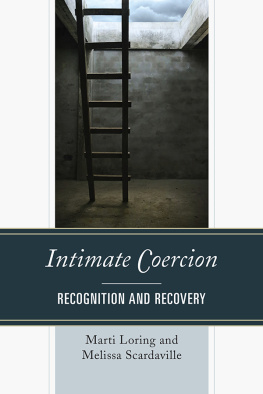
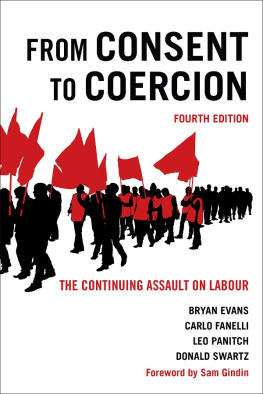

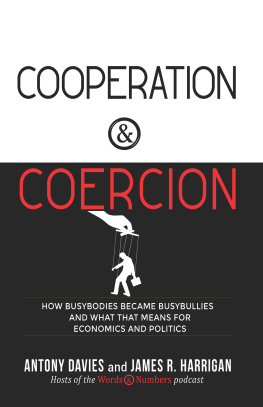

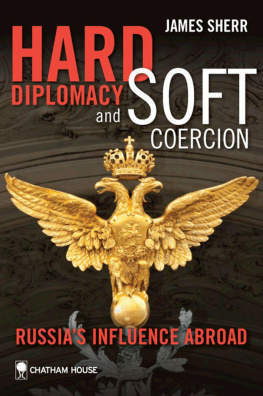
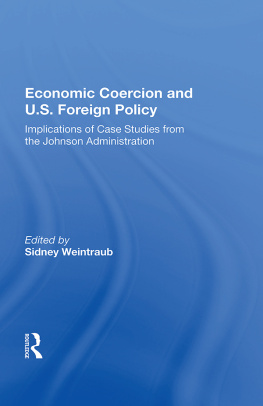


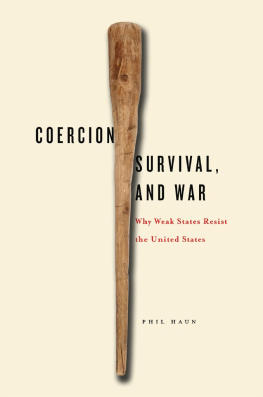

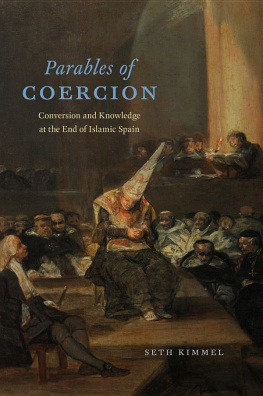
 The paper used in this publication meets the minimum requirements of American National Standard for Information SciencesPermanence of Paper for Printed Library Materials, ANSI/NISO Z39.48-1992.
The paper used in this publication meets the minimum requirements of American National Standard for Information SciencesPermanence of Paper for Printed Library Materials, ANSI/NISO Z39.48-1992.